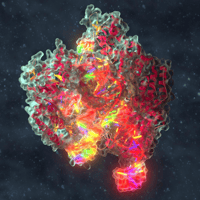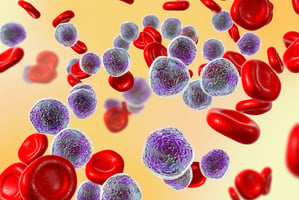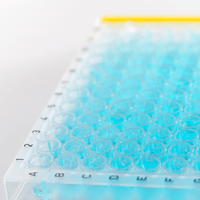Skip the Plasmids: Why You Should Use RNPs for Your CRISPR Projects CRISPR-Cas9 has revolutionized...
Five Pitfalls to Avoid When Generating Your Knockout Cell Line
Five Pitfalls to Avoid When Generating Your Knockout Cell Line
Knockout cell lines are an invaluable tool for biomedical research and can be used for a wide variety of studies with diverse uses from target essentiality to antibody validation. The advent of gene editing tools, including CRISPR-Cas9, has made the generation of knockout cell lines (as well as knock-in, point mutations, gene tagging, etc.) simpler and faster than ever before. As much as the technology has improved, however, there still exist several common pitfalls that researchers can encounter when generating their knockout cell line.
1. Setting for knockout pools rather than clonal lines.
Knockout pools can represent an attractive alternative to generating clonal knockout lines. Knockout pools are typically much cheaper to generate and also take much less time. However, knockout pools come with many limitations that researchers are often unaware of—in fact, a “knockout” pool isn’t really a knockout.
The process to generate a knockout pool starts exactly the same way as for a clonal knockout, with design, construction, and transfection of the CRISPR-Cas9 reagents. However, the process to generate a knockout pool ends there—single cell sorting, screening, and clonal expansion is not conducted. Because transfection efficiency and CRISPR-Cas9 activity are never 100%, the knockout pool will be a heterogeneous mix of cells with varying genotypes. As a result, most commercial providers only guarantee a 50% knockdown in the amount of target protein in the pool. While a 50% knockdown may be useful for some studies, similar levels of knockdown can be achieved much cheaper, faster, and more easily by using alternative approaches, such as RNAi.
2. Not accounting for off-target effects.
The generation of off-target edits by CRISPR-Cas9 have been well documented. Off-target effects occur when CRISPR-Cas9 is active at sites other than the intended target sequence. Off-target effects can be problematic for researchers, as it can be difficult to ascertain whether an observed phenotype is due to the intended edit or editing at an off-target site. Further, off-target effects can be difficult to detect—candidate sites can be sequenced, but unsuspected sites may require whole genome sequencing to uncover.
Fortunately, off-target effects can be effectively mitigated through careful design and planning. In our experience, off-target effects most readily occur with guide RNAs (gRNAs) with poor design scores. Using a proprietary algorithm, we screen candidate gRNA designs in silico to predict both gRNA activity and potential off-target activity.
3. Relying on "all-in-one" plasmids.
"All-in-One” plasmids contain all of the CRISPR-Cas9 components—crRNA, tracrRNA, and Cas9—on a single plasmid and can be an attractive choice for gene editing due to their simplicity.
However, these plasmids can present challenges researcher may not expect. Plasmids may integrate randomly into the genome potentially disrupting an untargeted gene, generating an off-target effect.

T7E1 assay demonstrating cutting efficiency at target and off target sites.
Adapted from Sojung Kim et al. Genome Res. 2014; 24:1012-1019.
Additionally, when driven off a plasmid, Cas9 can be active for far longer than necessary. Constitutive activity of Cas9 has been demonstrated to generate significantly more off-target effects. Additionally, because Cas9 is active only as a protein, it must be transcribed and translated before it can be used for gene editing. By the time Cas9 is translated into protein, gRNAs may be degraded resulting in reduced efficiency.
Directly transfecting Cas9 as protein can mitigate potential off-target effects while also increasing efficiency. As a result, we only use Cas9 protein in our custom cell line engineering service and also only supply Cas9 as protein in our CRISPR Complete kits.
4. Not screening enough cells.
CRISPR-Cas9 has been widely lauded as a game-changing tool for gene editing—which it indeed is. However, while revolutionary, its power has probably been a bit oversold by the scientific and mainstream media. In order to obtain a knockout cell line, CRISPR-Cas9 must be transfected into the cell and not only be active at every allele, but also introduce insertions/deletions (indels) causing frame shift mutations and the generation of early stop codons.

None of these steps have an efficiency of 100%, so the knockout cell clone you are attempting to generate may be rarer than you think. Adding additional complexity, many commonly used cancer cell lines are not simply biallelic for many target genes—they can often have 3, 4, 5, 6, or more copies of an individual gene, all which must be targeted to generate a knockout. At Canopy, we work diligently to identify clones that are complete knockouts at every allele and will screen as many as 800 different clones to find the desired genotype.
5. Underestimating the difficulty to DIY.
As mentioned, CRISPR-Cas9 has been a revolutionary tool for gene editing. It is not without its pitfalls, however, requiring careful selection of reagents, meticulous design, thorough screening, and understanding of the ploidy of your cell line as well as the copy number. Several procedures must be optimized for your cell line, including transfection protocol, culture conditions, and single cell sorting. Many cell lines do not tolerate single cell cloning well, requiring extensive care and optimization. As single cell cloning is a requirement for production of clonal knockouts, this step cannot be overlooked.
Researchers unprepared for these complexities can vastly underestimate the intricacies of the process and often end up wasting months/years, only to end up without successfully generating their line. Luckily, there are some highly experienced companies performing cell line engineering as a service. At Canopy, we’ve delivered hundreds of cell lines across many different cell types, taking the burden of becoming CRISPR cell line experts off of our customers and allowing them to focus on their research.







